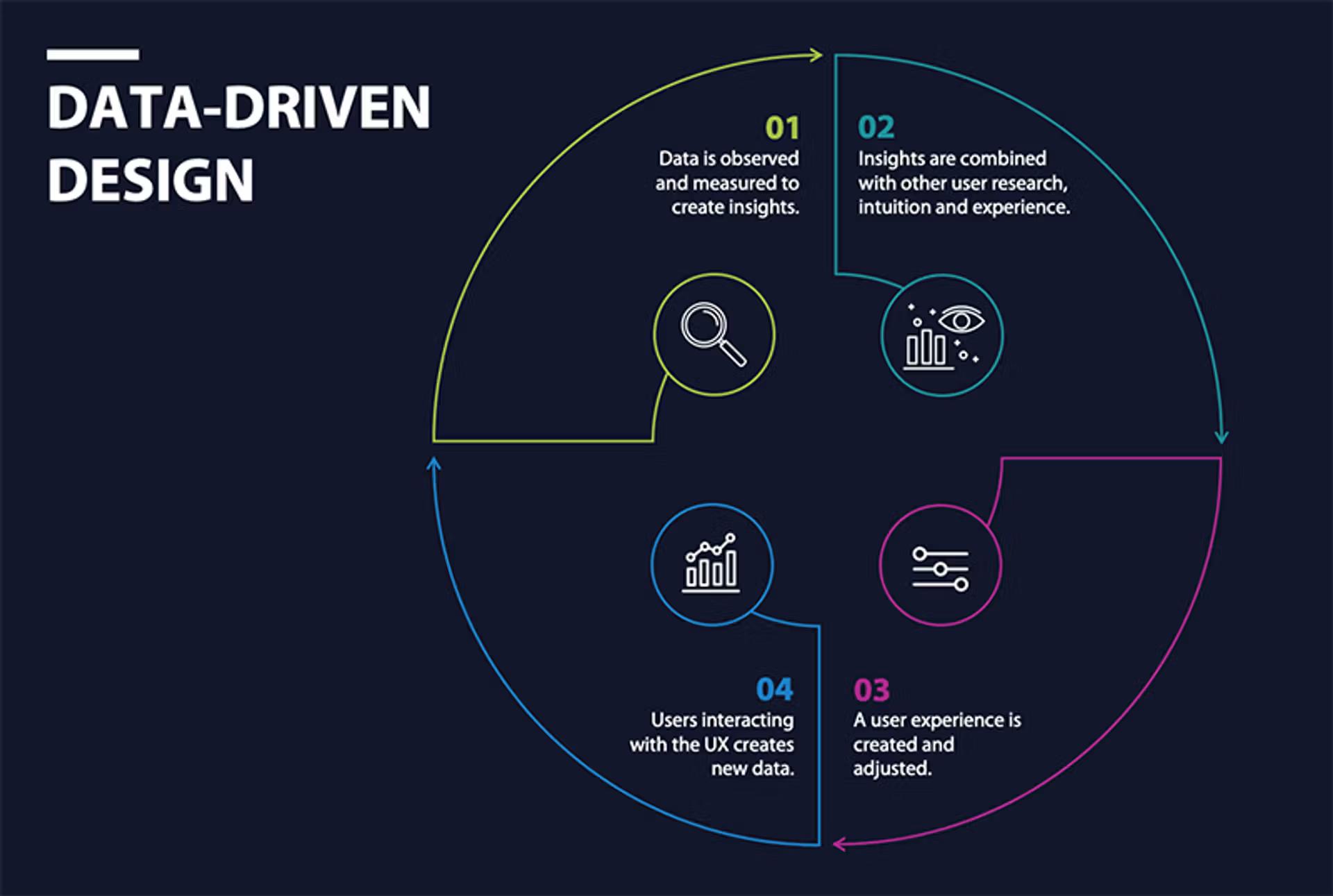In today’s digital ecosystem, success is no longer about choosing between data and creativity it’s about mastering the art of balancing both. Data-driven design has transformed how designers think, plan, and execute projects. Yet, while analytics guide strategy and decision-making, creativity remains the human element that gives design life, emotion, and identity.
In 2025, the most impactful digital experiences are born from the intersection of logic and imagination where insights fuel inspiration, and creativity gives context to data.
Understanding Data Driven Design
Data-driven design is an approach that uses real-time analytics, user behaviour data, and measurable insights to inform creative decisions. Every element from layout and colour palette to typography and user flow is backed by evidence rather than assumption.
By analyzing user patterns, heatmaps, click rates, and conversion funnels, designers gain a deep understanding of what truly resonates with audiences. It’s a continuous feedback loop of research, testing, and optimization that drives better results.
For example:
- A website’s homepage layout can be redesigned based on which sections users spend the most time on.
- A mobile app can adapt its navigation to reflect how users actually explore its features.
- A call-to-action button can change color or placement to improve conversions after A/B testing.
The insights are endless and so are the opportunities for refinement.
The Role of Creativity in a Data-Driven World
But here’s the truth data can tell you what users are doing, not why they do it. That’s where creativity steps in.
Creativity in design gives emotion to function. It’s what captures attention, builds trust, and creates memorable brand experiences. Without creativity, even the most optimized design risks feeling robotic or lifeless.
Great designers know that creativity is not just about visual beauty it’s about crafting meaningful experiences that connect emotionally. Whether it’s the tone of a brand voice, the visual storytelling of an interface, or the emotional journey of a user, creativity humanises data.
In other words, data informs decisions, but creativity defines the experience.
Striking the Perfect Balance
Balancing data and creativity requires harmony not dominance. Too much focus on analytics can limit innovation, while too much emphasis on creativity can overlook what actually works.
The balance comes from combining the precision of analytics with the freedom of artistic exploration. Here’s how businesses and designers can find that balance:
- Start with Data, Design with Heart
Use analytics to identify user pain points, then craft creative solutions that make interactions enjoyable and intuitive. - Design Hypotheses, Not Just Art
Treat every creative idea as a testable hypothesis. Let creativity propose possibilities and data validate them. - Test and Iterate Constantly
Great design is never final. Continuous testing, analyzing, and refining are key to aligning user expectations with brand goals. - Keep the Human Element Alive
Data tells the story, but designers translate it into emotion. Maintain empathy and imagination at the center of every decision.
When Analytics and Art Work Together
The beauty of data-driven creativity is that it creates experiences that both perform and inspire. For instance, Netflix and Spotify use behavioural analytics to personalise content recommendations while maintaining beautiful, intuitive, and emotionally engaging interfaces.
E-commerce platforms like Amazon leverage data for product placement and user journey optimisation but their success also depends on visual storytelling, brand personality, and UX aesthetics that keep users coming back.
This blend of logic and creativity transforms ordinary interactions into memorable experiences that drive loyalty, satisfaction, and growth.
The Future of Data Driven Designs
As artificial intelligence and predictive analytics continue to evolve, design is entering a new era where creativity is enhanced by machine learning and automation. Designers can now generate layouts, colour schemes, and UI elements informed by real-time data freeing them to focus on emotional storytelling and innovation.
In 2025 and beyond, the future of design will belong to professionals who can merge art and analytics seamlessly. Those who can interpret data while still thinking creatively will shape experiences that are both functional and inspiring.
The question is no longer whether data should guide design it’s how far creativity can go when powered by data.
Conclusion
Data-driven design is not about replacing creativity; it’s about empowering it. When designers use analytics as a compass rather than a constraint, they unlock a new level of potential where every decision is intentional, every feature purposeful, and every interaction meaningful.
The best designs are not those that simply look good or perform well they’re the ones that do both.
In the digital landscape of 2025, data may guide your direction, but creativity will define your destination.
SEO Keywords: data-driven design, UX analytics, creativity in design, AI design tools, user experience optimisation, web design trends 2025, creative data strategy, analytics in UX, digital design innovation, creative intelligence.
